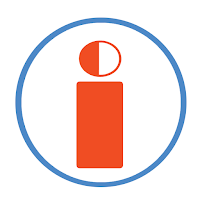Internet connected the world by enhancing the accessibility of information. In the 1980's, a computer with an active internet could send and receive messages within a few minutes. This could have traditionally taken a long time. Fast forward to a few years later and you find yourself in a space that evolved in a very small span of time.
India also took an active participation in the wave of digitization. And why not? With around 500 million potential internet users, the market looked lucrative. Industries which heavily relied on traditional methods of selling their products could run virtual stores on e-commerce websites. Initially, this made the buyers skeptical but soon they found the pros of going "online".
Coming to the insurance industry, it has been functional for more than a century in the country. But with negligible amount of change, with respect to operations. A simple door-to-door sales process was followed by the company with insurance agents at its core. Here, a claim took months to settle. And communications were full of jargons. This led to Customers showing interest in only the major insurance sectors like life and health, while neglecting motor insurance. Especially two wheeler insurance.
What Changed?
Digitization forced a change in an industry that was stagnant for decades. For two-wheeler owners that often shied away from insurance, buying the policy in a matter of few minutes became easier. Let's take a look at each aspect of buying a bike insurance policy by comparing the traditional and digitized process:
Insurance Quotes
One of the major factors that contribute to the purchase of a policy is the price. A low-priced product will always sell better than an expensive alternative, provided there is a match in quality and service offered by the manufacturer i.e. the insurance company. If one had to compare bike insurance policies offered by various insurance companies, he/she would approach an insurance broker. Next, an inquiry would be made and a long wait began. The broker would return with insurance quotes from different insurers, the customer would then compare and select the one based on personal preference. Digitization greatly reduced the turnaround time for both - the brokers and customers. A potential policyholder can simply go online and visit an online insurance broker or a web aggregator, compare bike insurance policies and make a decision within a matter of a few minutes. Digitization introduced time efficiency.
Purchase Journey
Traditionally, buying a bike insurance policy involved extensive paperwork. This included application forms, documents of the customer, documents related to bike, etc. The applicant would be registered and if it was a first-time buyer or a case of break-in policy, the bike would be inspected. This would be the first phase of the purchase journey. The second phase began with an inspection of the bike and its result. If the vehicle was deemed to be insurable through the inspection, a policy would be issued via post. It would take around 10 to 15 days for a person to get the bike insured. During this period, the bike would be vulnerable to various risks. With online two wheeler insurance, the purchase journey can be completed in a matter of just a few days. For example, Acko General Insurance, a digital insurance company collects user's details on their website - www.acko.com. The user is asked for a preferred time slot in order to carry out an inspection (if required) and then the policy is issued instantly. If an inspection is not required, the entire purchase journey can be completed within two minutes. Digitization improved the purchase process.

Claims
The claim process of new-age and traditional insurers is similar in a few ways. The major difference is, convenience. Also, now you can track the status of your claim and ask questions. Going by the example of Acko, their claim process is simple to understand. You can get your queries resolved by either getting in touch with their customer service executive or a member of the Claims Team. When a bike meets with an accident, the policyholder is supposed to get in touch with the insurance company for making a claim. Now a claim can be raised directly through the website. Fill-in details related to the incident and collect the required documents. The incident spot and the vehicles will be inspected by an assessor and an estimate of the claim will be generated. The next step is getting the vehicle repaired. Acko provides a 3-day repair services in select cities. Once the vehicle is repaired, it is dropped to the policyholder's doorstep. The claim is settled by paying the customer for the financial loss they suffered.
The Bottom Line
We are yet to reach the brim of compliance in terms of two-wheeler insurance. Owing to the Indian Digital Initiative, we are definitely getting closer. Through this, insurers are able to educate new as well as old bike owners about the importance of bike insurance and the benefits it offers. Trusted insurers are almost forced to give up the old ways and turn to digitization thanks to the Indian Digital Initiative.





)


